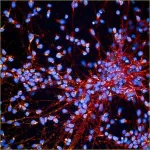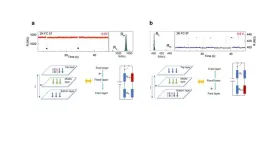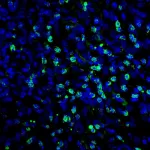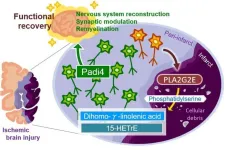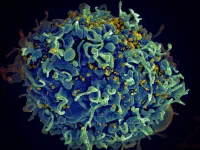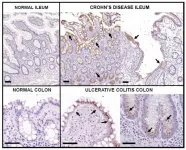Under strict embargo: 16:00hrs BST 10 August 2023
Peer reviewed
Observational study
Cells
Researchers at the Francis Crick Institute and UCL Queen Square Institute of Neurology, working with technology company Faculty AI, have shown that machine learning can accurately predict subtypes of Parkinson’s disease using images of patient-derived stem cells.
Their work, published today in Nature Machine Intelligence, has shown that computer models can accurately classify four subtypes of Parkinson’s disease, with one reaching an accuracy of 95%. This could pave the way for personalised medicine and targeted drug discovery.
Parkinson’s disease is a neurodegenerative condition impacting movement and cognition. Symptoms and disease progression vary from person to person due to differences in the underlying mechanisms causing the disease.
Until now there hasn’t been a way to accurately differentiate subtypes, which means people are given nonspecific diagnoses and don’t always have access to targeted treatments, support or care.
Parkinson’s disease involves misfolding of key proteins and dysfunction in the clearance of faulty mitochondria, the source of energy production in the cell. The majority of Parkinson’s disease cases start sporadically, but some can be linked to genetic mutations.
The researchers generated stem cells from patients’ own cells and chemically created four different subtypes of Parkinson’s disease, two involving pathways leading to toxic build-up of a protein called α-synuclein and two involving pathways leading to defunct mitochondria, to create a ‘human model of brain disease in a dish’.
They then imaged the disease models in microscopic detail and labelled key cell components including lysosomes, which are involved in breaking down worn-out parts of the cell. The researchers ‘trained’ a computer program to recognise each subtype, which was then able to predict the subtype when presented with images it hadn’t seen before.
The mitochondria and lysosomes were the most important features in predicting the correct subtype – confirming their involvement in how Parkinson’s disease develops – but other areas of the cell like the nucleus were also found to be important, as well as aspects of the images we can’t yet explain.
James Evans, PhD student at the Crick and UCL, and co-first author with Karishma D’Sa and Gurvir Virdi, said, “Now that we use more advanced image techniques, we generate vast quantities of data, much of which is discarded when we manually select a few features of interest.
“Using AI in this study enabled us to evaluate a larger number of cell features, and assess the importance of these features in discerning disease subtype. Using deep learning, we were able to extract much more information from our images than with conventional image analysis. We now hope to expand this approach to understand how these cellular mechanisms contribute to other subtypes of Parkinson’s.”
Sonia Gandhi, assistant research director and group leader of the Neurodegeneration Biology Laboratory at the Crick, said, “We understand many of the processes that are causing Parkinson’s in people’s brains. But, while they are alive, we have no way of knowing which mechanism is happening, and therefore can’t give precise treatments.
“We don’t currently have treatments which make a huge difference in the progression of Parkinson’s disease. Using a model of the patient’s own neurons, and combining this with large numbers of images, we generated an algorithm to classify certain subtypes - a powerful approach that could open the door to identifying disease subtypes in life. Taking this one step further, our platform would allow us to first test drugs in stem cell models, and predict whether a patient’s brain cells would be likely to respond to a drug, before enrolling into clinical trials. The hope is that one day this could lead to fundamental changes in how we deliver personalised medicine.”
The project was developed during disruption to the lab’s research in the pandemic – the whole team undertook an intensive coding course, learning to code in Python, developing skills which they are now applying to current projects.
James Fleming, Chief Information Officer at the Crick, who worked with Faculty AI on the project, said, “AI is a fascinating and powerful technology, but one which is often rendered impenetrable by hype and jargon. This paper came about as a result of a unique industry partnership with Faculty to see if a group of complete AI beginners could learn and apply best practice directly to their science in a very compressed time frame. The success of this project not only proved that they could, unlocking new insights in the process, but has also helped drive investment into the rapid expansion of our own AI and software engineering team, which has over 25 projects ‘in-flight’ with different labs across the Crick, with new projects kicking off every month.”
Next steps for the research team are to understand disease subtypes in people with other genetic mutations, and to work out whether sporadic cases of Parkinson’s disease (i.e., without genetic mutations) can be classified in a similar way.
-ENDS-
For further information, contact: press@crick.ac.uk or +44 (0)20 3796 5252
Notes to Editors
Reference: D’Sa, K. et al. (2023). Prediction of mechanistic subtypes of Parkinson’s using patient derived stem cell models. Nature Machine Intelligence. 10.1038/s42256-023-00702-9
The Francis Crick Institute is a biomedical discovery institute dedicated to understanding the fundamental biology underlying health and disease. Its work is helping to understand why disease develops and to translate discoveries into new ways to prevent, diagnose and treat illnesses such as cancer, heart disease, stroke, infections, and neurodegenerative diseases.
An independent organisation, its founding partners are the Medical Research Council (MRC), Cancer Research UK, Wellcome, UCL (University College London), Imperial College London and King’s College London.
The Crick was formed in 2015, and in 2016 it moved into a brand new state-of-the-art building in central London which brings together 1500 scientists and support staff working collaboratively across disciplines, making it the biggest biomedical research facility under a single roof in Europe.
http://crick.ac.uk/
END

